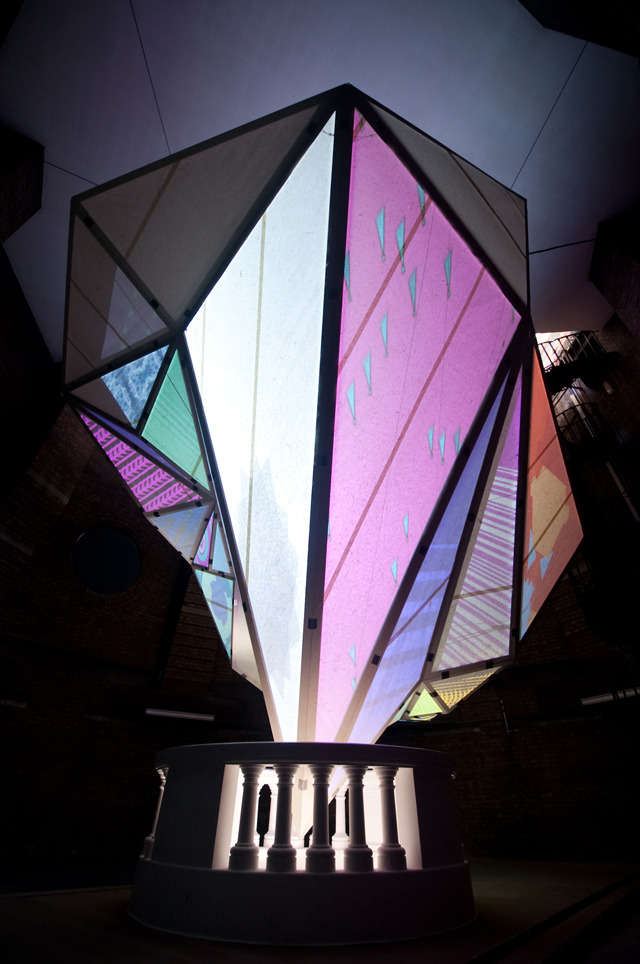London’s Design Festival annually brings together innovative architects and designers to amplify the city’s imaginative borders and to recreate the city’s most notable places. In September, London’s Victoria and Albert Museum (V&A) was invaded by a mysterious structure that lived off an invisible force. Prism, designed by London artist Keiichi Matsuda, was one of several large-scale interactive installations presented by the festival.
In what was a collaboration of programmers, creative coders, and enthusiasts, Prism captured the hidden data that flows throughout London and visualized it as a “patchwork” of virtual information created by the people and the machines of London.

Rather than seeing a city built for a human environment, Prism highlights the networks, habitats and language of a city’s machines— putting technologies that monitor/watch over human environments under the microscope. Ultimately, underlying the inter-connected relationship people become accustomed to with technology. Viewers see in real-time 50 various data sources projected onto the structure’s panels including the amount of gas used at the prime minister’s residence, economic statistics, and traffic webcams.
With a background in architecture and greatly influenced by urbanism, Keiichi Matsuda’s interest in media and technology brought about Prism’s clash of London’s physical and virtual world. By combining these elements, it highlights the dangers and potentials of what technology and information networks could create not only for a city’s efficiency but for the human environment.
Although the festival is over and the installation is gone, the information grid that once lived on its panels continues to live on a website with up-to-date data info.



Think people should hear about this?